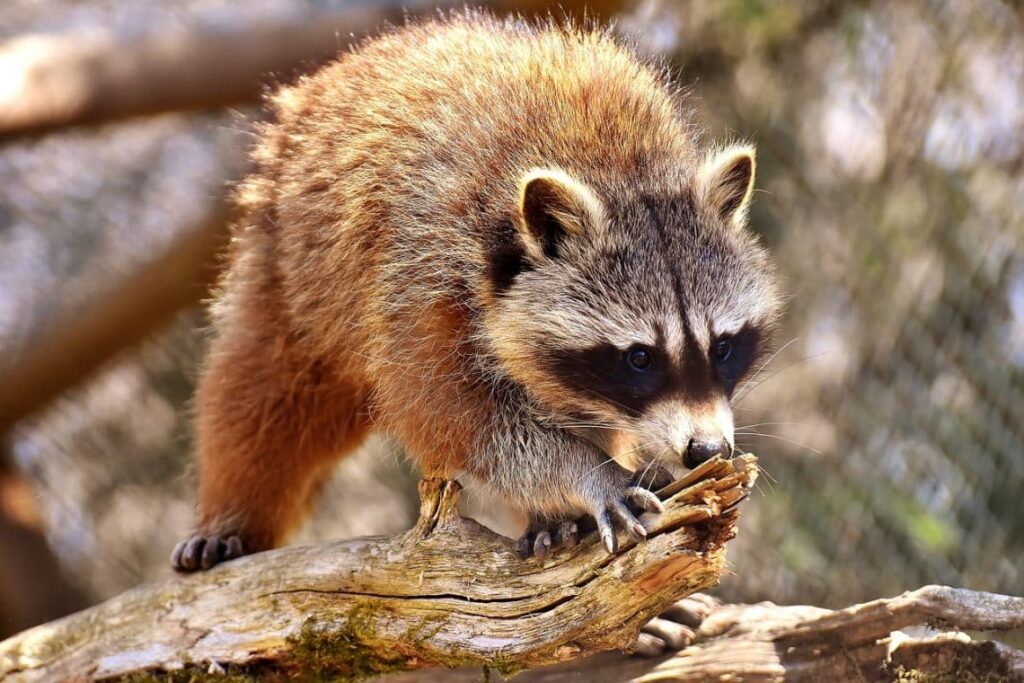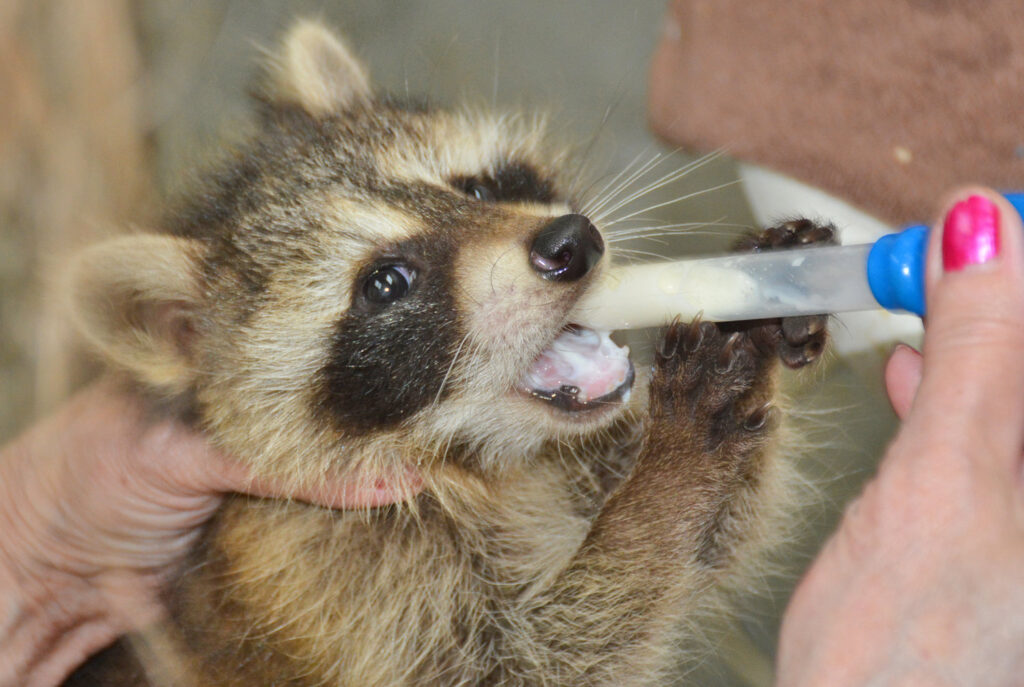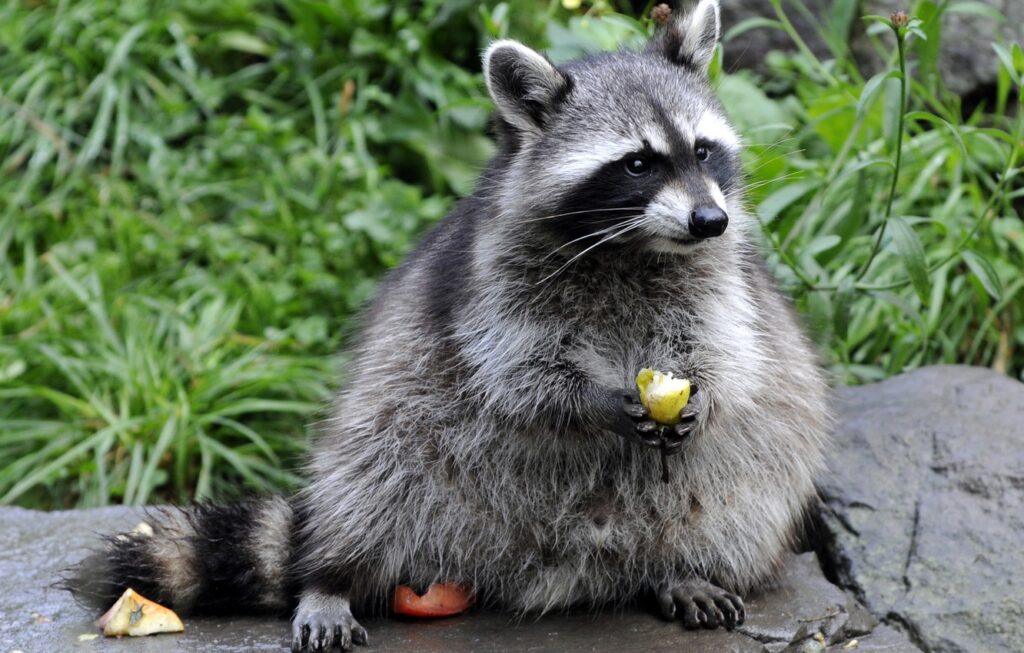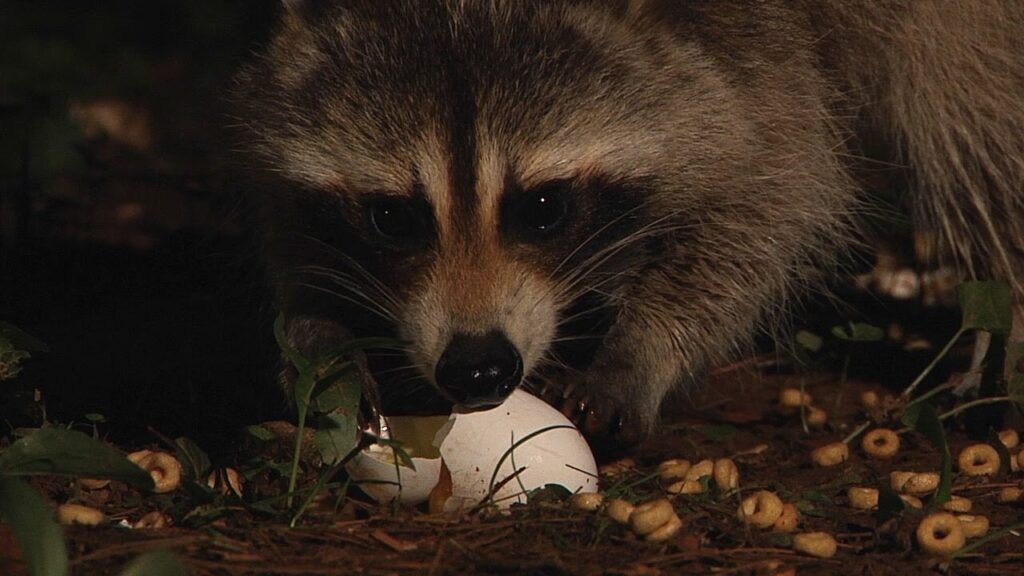The raccoon is an animal that is very present in nature, which is why most people recognize them easily. They usually feed on practically all kinds of food, including human garbage. They are known as masked thieves since they often take advantage of every opportunity to steal food and other household resources. To learn more about what Raccoons eat, we invite you to continue reading this article.

What Do Raccoons Eat?
If you have decided to welcome a raccoon as a pet, it is extremely important that you know everything about how to take care of it, especially about its diet. The raccoon is an omnivorous creature, that is, it feeds on meat as well as vegetables. We must know how to estimate the portions of food to provide at each feeding, whether it is a puppy or an adult, since it happens that the raccoon is prone to developing obesity in certain cases.
Baby Raccoon Care
If you have accidentally abandoned a young raccoon or a baby of them, it must be for one of the following reasons:
- The mother has gone out in search of food and has not returned
- His burrow has been shattered
- Its burrow is very hot so the young have come out
- The mother is taking all her young to another site
- Some predators have made an appearance
- Your pet has arrived with a baby raccoon
In any of these cases, it is appropriate to wait for the mother's return for a while, staying at a safe distance. If it does not appear and if you notice that the calf has opened its eyes, we suggest you immediately call the forest agents, who will take care of it in a fauna protection center.
If the opposite happens, if the baby raccoon has not yet opened its eyes, it may be dehydrated or hungry, so you will have to provide it with some food to keep it alive until it is treated at an animal protection center. Raccoons usually depend on their mother for 3 or 5 months, while their development and learning stage lasts. Weaning occurs at 12 weeks of age despite the fact that they remain by their mother's side until they are one year old. They usually open their eyes at 8 weeks of life.
How should care be?
You should get a soft cloth to pick up the hatchling. It is very important to use gloves when handling it (at 4 weeks of age it already has teeth) and to do it carefully, as it will surely growl at you and shake in fear. Cover the small hatchling in a cloth and warm it. You can use a thermal blanket on which to place a towel, and on top of it a cardboard box with the little raccoon inside. It should not come into direct contact with the thermal blanket, as it could burn you. Set the temperature to 36ºC. Frayed fabrics should not be worn.
Verify that he has no injuries of any kind by checking his entire body. If you get any wound proceed to wash it with soap and warm water. Use a towel for everything, as her mother would. Inspect it for external parasites such as fleas and ticks and discard them immediately. If you find a large number of insects, it will be a sign that the abandonment or disappearance of the mother is true. Take him as soon as possible to the veterinary service to check his health condition.
Feeding a Baby Raccoon
In the following paragraphs we provide you with details about the portions and care with the food of a baby raccoon according to its age. Let's keep in mind that a bottle must be used:
one week old
Its weight will range between 60 and 140 grams and its eyes are still closed. The face mask and the tail rings will be inconspicuous, it will not exhibit lint on the skin of its belly. We have to get milk for the breeding of kittens in any store for animals. It will require a contribution of between 3 to 7 centiliters (5% of its weight) on 7 or 8 occasions a day at intervals of 3 hours, including at night.
The milk should be slightly warmer than your body temperature. When you finish eating, you will have to pass a moistened cloth over his genitals to make him urinate like his mother would.
2 Weeks
Upon reaching two weeks the little raccoon will weigh from 190 to 225 grams. It will still keep its eyes closed and a hairless belly, although it does have fluff on the rest of its body. At this age, the dose of milk should be increased from 9,5 to 11,3 centiliters, also every 3 hours, and the intake can be reduced to 6 times a day.
3 Weeks
After three weeks of existence, the raccoon will weigh between 320 and 400 grams. It will begin to open its eyes progressively and the fur will finish developing. The dose of milk will be increased from 16 to 20 cl.
Weeks 4 and 5
Throughout the fourth and fifth week we will continue to increase the dose taken with respect to your weight. You will always be given 5% of your body weight in milk.
6 Weeks
At six weeks he would already have reached 750 to 820 grams of weight. We will begin to reduce milk intake to provide 52 and 55 centiliters of milk four times a day and we will no longer provide food in the evening.
7 Weeks
From week seven to eight we will begin to further distance the time of each feeding.
8 weeks and more
From the eighth week he begins to be offered solid food that he will gradually accept. You can buy food for dogs or cats puppies. At first it will be difficult for him to accept but gradually he will get used to it. In this phase, it is extremely relevant not to increase the doses of milk.
Weeks 10 to 16
From week ten to sixteen the raccoon will already be weighing about two kilograms. The animal will have to have become accustomed to solid food and for that reason we have to remove milk from its diet. Try to get high quality food for young that will make up two thirds of their total diet, the remaining third will be made up of fresh fruits and vegetables. In this phase you will allow him to eat abundantly since it is a growth stage, so you should divide his portions into two meals a day.
You must have fresh and clean drinking water available daily, additionally, you can prepare a small pond for him to take a refreshing bath. The water in this site should also be changed regularly. At the time of weaning the raccoon can be placed in a larger cage that has a modest wooden nest, for example. This should be cleaned frequently and kept sheltered from the cold.
16 weeks and more
After reaching sixteen weeks of existence, the raccoon is already completely independent. If you have considered giving him freedom, this is the appropriate time. You have to leave the cage open (no food inside) and he will start to investigate. He may return a couple of times before leaving for good, or he may not.
Feeding of an adult Raccoon
As omnivorous creatures, raccoons tend to eat almost anything between vegetables and meat. Vegetables in their natural diet usually include cherries, apples, acorns, persimmons, strawberries, peaches, citrus, plums, grapes, wild figs, watermelons, carrots, beechnuts, corn, and walnuts. They can also be fed with feed or wet cat food.
Regarding meat, raccoons tend to consume more invertebrates than vertebrates. As part of their favorite foods we can get frogs, fish, crabs, insects, rodents, chickens, turkeys and bird eggs. When food is often scarce for wild raccoons, they make their presence known in human garbage dumps or feed on animals hit by cars.
As you may have observed, there are different kinds of food that you can offer to an adult specimen. It is very important to vary the type of food so as not to bore him and that you find out more to know what other things he might like. Keep in mind never offer red meat and check their weight from 16 weeks to confirm that they maintain a stable weight (they have a predisposition to gain weight).
An elderly raccoon will surely continue eating the diversity of foods that we have previously outlined, although we do have to reduce the amount according to how he decreases his physical activity.
Characteristics of the Raccoon
The raccoon belongs to the class of mammals and is also called the boreal or common raccoon, since it is the best known variety of the genus Procyon. In fact, there are three varieties of raccoons, but the others have a smaller distribution area and are little known, so in a practical way, Procyon lotor is the species to know.
It belongs to the order Carnivora and the family Procyonidae, and is classified as a plantigrade, that is, it can stand on its hind legs while it can hold things with its front legs. In contrast, he is unable to jump great distances.
A raccoon is easily recognized by the dark "mask" on its face, over its eyes. It is a creature similar in size to that of a cat, being able to measure as an adult from 40 to 70 centimeters in length and with a weight of 2 to 14 kilograms. The male usually weighs more than the female by 15 to 20 percent. The color of its fur is gray or reddish brown. It has a bushy tail "adorned" with 4-10 black rings. It has 5 toes on each leg, and the front ones are very similar in shape to a human's hands.
Habits
They are animals with unusual characteristics, since they are extremely creative, getting to know that they can open closed containers (such as garbage cans and even doors). They have a reputation for being intelligent and they love to get into mischief, so much so that their sagacity and dexterity allow them to survive in a wide range of environments.
It is one of the few medium-sized animal species that have extended their range since the advance of the human species began (the other being the coyote). This animal is often considered harmful or a nuisance. They have been able to adapt easily to urban environments (just like urban possums, skunks and foxes), rummaging through garbage dumps and other places where they might find food.
You may also be interested in these other interesting articles:




